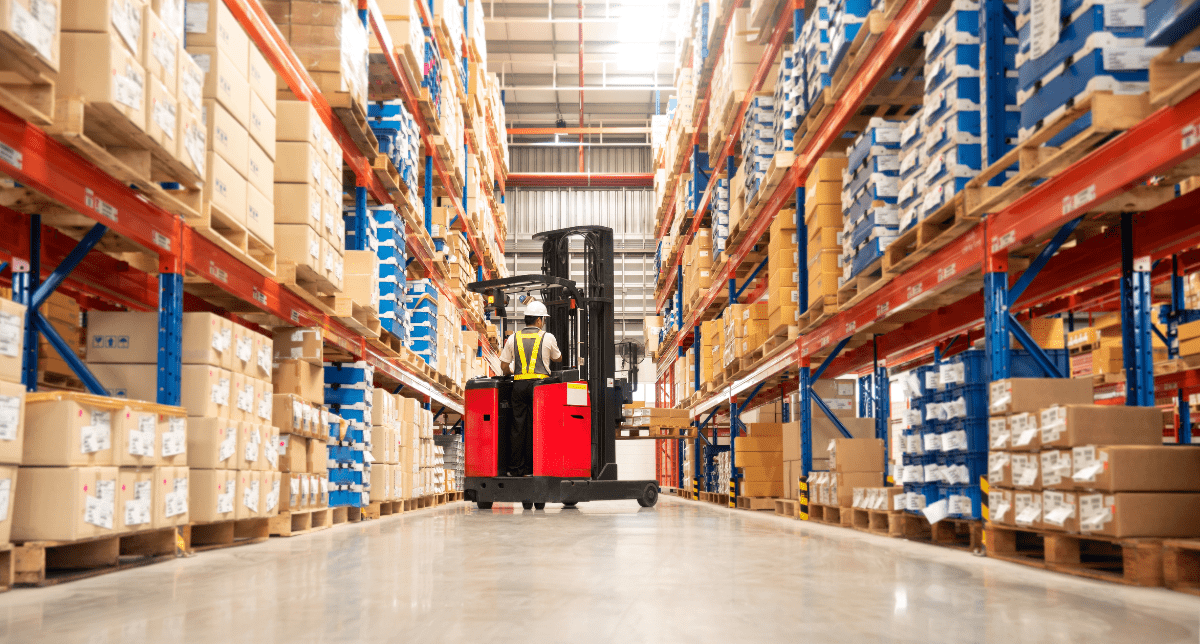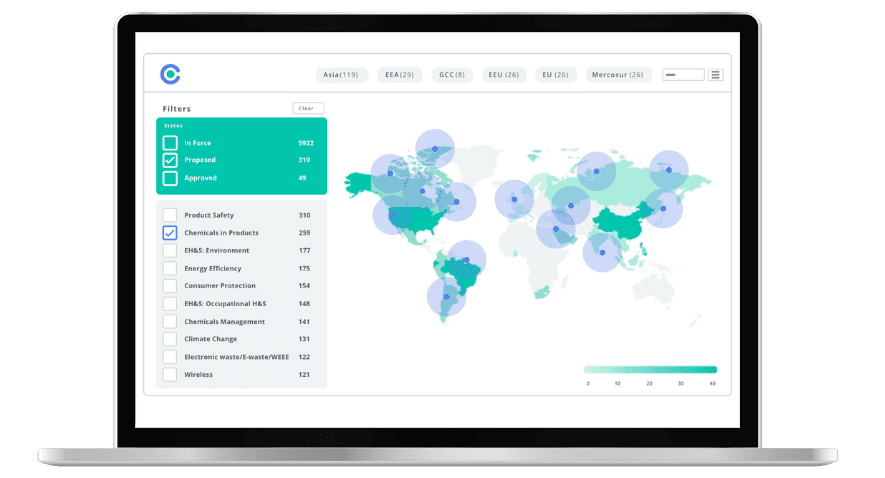
Extended Producer Responsibility for Packaging in the United States: a 2025 Update

This blog was originally posted on 5th February, 2025. Further regulatory developments may have occurred after publication. To keep up-to-date with the latest compliance news, sign up to our newsletter.
AUTHORED BY RUAN DOHERTY, REGULATORY ANALYST, COMPLIANCE & RISKS
As concerns over packaging waste and plastic pollution increase, more U.S. states are turning to Extended Producer Responsibility (EPR) legislation as a solution. EPR policies require producers to take financial and operational responsibility for the collection, recycling, and proper disposal of packaging materials, shifting costs away from municipalities and taxpayers.
Since Maine became the first U.S. state to enact packaging EPR legislation in 2021, several other states – including Oregon, Colorado, California, and Minnesota – have followed suit, implementing programmes that mandate producer contributions, data reporting, and compliance with recycling and sustainability targets. These programmes are now in various stages of implementation, with key deadlines set for 2025 and beyond. Meanwhile, other states are evaluating similar policies, with new legislative developments emerging this year.
This blog provides an up-to-date overview of the current EPR landscape and key programmatic and regulatory developments for 2025.
Current Landscape
Maine – “An Act to Support and Improve Municipal Recycling Programmes and Save Taxpayer Money” (Legislative Document 1541)
In July 2021, Maine enacted LD 1541, requiring producers to join a stewardship organization (SO) to manage collection, recycling, and reporting of packaging, while also contributing to funding and reporting volumes. The state’s EPR programme will be operated by an SO, serving a similar function to Producer Responsibility Organizations (PROs) in other states.
In December 2024, the Maine Board of Environmental Protection adopted technical rules that establish the programme’s core goals and structure, including tiered interim targets.
Key Dates:
- Final rule adoption and the publication of a list of “readily recyclable” materials are expected by spring/summer 2025.
- The SO is expected to be selected in late 2025/early 2026.
- By May 1, 2026, producers will be required to register and report to the SO on the total amount, whether by weight or volume, of each type of packaging material sold, offered for sale or distributed for sale in or into the State by the producer in the prior calendar year.
- By September 2026, producers are expected to pay the start-up registration fee to the SO.
Oregon – Plastic Pollution and Recycling Modernization Act (Senate Bill 582)
In January 2022, SB 582 entered into force, requiring producers of packaging, paper products and food serviceware to take financial and operational responsibility for recycling these materials. In November 2023, the initial set of implementation rules were approved, outlining recyclable materials and PRO responsibilities.
In November 2024, the second set of rules were adopted, covering material-recovery facility standards, permits and worker wage provisions. The revised programme plan was submitted by the proposed designated PRO (Circular Action Alliance) in December 2024, and will be reviewed by the state Department of Environmental Quality. As the only organization to have submitted a programme plan, Circular Action Alliance is expected to be selected as the designated PRO in early 2025.
Key Dates:
- By March 31, 2025, producers intending to sell, offer for sale or distribute covered products on or after July 1, 2025 are able to pre-register.
- By July 1, 2025, the programme is set to officially commence, with producers required to be members of a producer responsibility organization if they sell, offer for sale or distribute packaging and related products into the state. Producer fee obligations shall also commence.
Colorado – Producer Responsibility Programme for Statewide Recycling (House Bill 22-1355)
In August 2022, HB 22-1355 entered into force, requiring producers to pay for recycling programmes for their container, packaging and printed paper. Participation in the programme is required if a producer generates $5.32 million or more in annual revenue or uses one ton or more of packaging materials in Colorado.
Circular Action Alliance was selected as the designated PRO in 2023, and producers were required to register by October 1, 2024.
Key Dates:
- Circular Action Alliance is currently developing the draft programme plan, with official submission expected on or before February 1, 2025.
- By July 1, 2025, producers are prohibited from selling or distributing products that use covered materials unless the producer is participating in the programme.
- By August 31, 2025 producers shall report data for the first six months of 2025.
- No later than January 1, 2026, and annually by a date determined by the PRO, producers must pay producer responsibility dues.
California – Plastic Pollution Producer Responsibility Act (Senate Bill 54)
On January 1, 2023, SB 54 entered into force, requiring producers of residential and commercial single-use packaging and products to join a PRO. Circular Action Alliance was selected as the designated PRO at the beginning of 2024.
In December 2024, the California Department of Resources Recycling and Recovery (CalRecycle) released its source reduction baseline report and updated the covered materials categories list. Furthermore, the implementing regulations were released for a second public comment period, closing on December, 17 2024. The implementing regulations were expected to be promulgated in January 2025 but no action has been taken yet.
Key Dates:
- By April 1, 2025, producers must register with the PRO.
- By August 1, 2025, producers are to report packaging data for the first six months of 2025.
- Upon approval of a programme plan, or commencing January 1, 2027, whichever is sooner, a producer shall not sell, offer for sale, import, or distribute covered materials in the state unless the producer is approved to participate in the plan of a PRO.
- By January 1, 2032,
- 25% of plastic packaging use shall be reduced;
- 65% of all single-use plastic packaging shall be recycled; and
- 100% of packaging in the state shall be recyclable or compostable.
Minnesota – Packaging Waste and Cost Reduction Act (House File 3911)
On August 1, 2024, HF 3911 entered into force as part of omnibus legislation. It covers packaging, food packaging and paper products and is designed to boost recycling with a goal of eliminating packaging and paper products that are not refillable, reusable, recyclable or compostable.
On December 30, 2024, Circular Action Alliance submitted an application for registration to the Minnesota Pollution Control Agency, with selection of a PRO expected in early 2025.
Key Dates:
- By July 1, 2026, producers are required to register with the designated PRO.
- By October 1, 2028, the PRO must submit a stewardship plan to the Agency.
- After January 1, 2029, no producer may introduce covered materials either separately or when used to package another product, unless the producer enters into a written agreement with a producer responsibility organization to operate under an approved stewardship plan.
- After January 1, 2032, no producer may introduce covered materials unless covered services are provided for the covered materials through a programme in a stewardship plan approved by the commissioner.
EPR Progression in Other States
Maryland and Illinois have taken steps toward packaging EPR systems, but both are currently focusing on advisory councils instead of full EPR implementation. Meanwhile, New Jersey currently has two bills under consideration in 2025.
- Maryland – Senate Bill 222: Following commencement in July 2023, this law directs the Maryland Department of the Environment to evaluate the state recycling system and to create an advisory council to develop an EPR proposal. Circular Action Alliance was selected as the designated PRO in October 2023. A needs assessment is expected in early 2025.
- Illinois – Senate Bill 1555: Having also entered into force in July 2023, this law establishes an advisory council to develop future EPR policies. The council must submit a report by December 31, 2025, on packaging recycling, infrastructure, and strategies to achieve a 65% plastic recycling rate by 2035. Unlike Maryland, Illinois’ law does not include PRO provisions.
- New Jersey – Senate Bill 208 and Senate Bill 3398: SB 208, as introduced in January 2024, requires producers to implement stewardship plans for packaging waste. SB 3398, introduced in June 2024 as the “Packaging Product Stewardship Act,” holds producers responsible for reducing landfill-bound packaging. However, SB 3398 has faced opposition, causing repeated delays. The bill will return to committee hearings in February for further discussion.
2025 Developments
With the restart of legislative sessions in January 2025, a number of packaging EPR bills have been introduced in Washington, Tennessee and New York.
- Washington – House Bill 1150: Introduced on January 2, 2025, this bill proposes to establish a product stewardship programme for packaging and printed paper, including recycling and reuse targets and plastic source reduction. Producers would be required to register with a PRO by March 2029.
- Tennessee – Senate Bill 38: Introduced on January 6, 2025, this bill is a reintroduction of a previously-proposed EPR bill for packaging, aimed at creating jobs, diverting recyclable packaging from landfills, recovering valuable materials, and engaging producers in reducing and reusing packaging.
- New York – Senate Bill 1464: Introduced on January 10, 2025, this bill proposes to enact the “Packaging Reduction and Recycling Infrastructure Act” to require companies selling, offering for sale, or distributing packaging materials and products to register with a PRO to develop a packaging reduction and recycling plan.
Conclusion
The momentum behind packaging EPR in the U.S. continues to grow, with programmes established in Maine, Oregon, Colorado, California, and Minnesota, other states are exploring further programme development or new legislation. While approaches vary, the goal remains the same: shift the financial and operational responsibility of packaging waste management from municipalities to producers, incentivize waste reduction, improve recyclability, and increase recycling rates.
As the landscape shifts, businesses must stay informed and adaptable, ensuring compliance with emerging regulations while contributing to a more sustainable packaging ecosystem. With EPR legislation expanding, 2025 marks a pivotal year for producer responsibility and waste management in the U.S.
Stay Ahead Of Regulatory Changes in Extended Producer Responsibility for Packaging
Want to stay ahead of regulatory developments in Extended Producer Responsibility for Packaging?
Accelerate your ability to achieve, maintain & expand market access for all products in global markets with C2P – your key to unlocking market access, trusted by more than 300 of the world’s leading brands.
C2P is an enterprise SaaS platform providing everything you need in one place to achieve your business objectives by proving compliance in over 195 countries.
C2P is purpose-built to be tailored to your specific needs with comprehensive capabilities that enable enterprise-wide management of regulations, standards, requirements and evidence.
Add-on packages help accelerate market access through use-case-specific solutions, global regulatory content, a global team of subject matter experts and professional services.
- Accelerate time-to-market for products
- Reduce non-compliance risks that impact your ability to meet business goals and cause reputational damage
- Enable business continuity by digitizing your compliance process and building corporate memory
- Improve efficiency and enable your team to focus on business critical initiatives rather than manual tasks
- Save time with access to Compliance & Risks’ extensive Knowledge Partner network

Updates on Key EU Environmental Regulations and China RoHS
Uncover recent key updates and issues that could have significant effects on manufacturers, their approaches to product development, and their supply chains.


